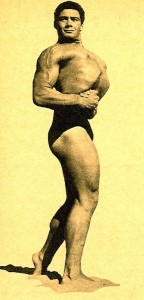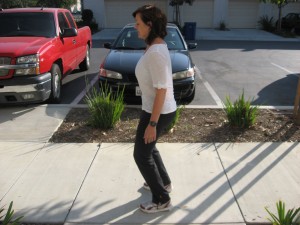Last year, scarves seemed to make an appearance on the fashion scene. Until then, my only scarf use equaled going to Washington to visit family and using it to keep my neck warm. Now, I'm not really a high-fashion person, but I have to say I bought a couple. And then I tried to put one on and wind it all up around my neck. And tie it. In a knot. In a knot to one side. In a droopy knot. In a droopy knot to one side. It went on and on until I had to call uncle. I'm not really a high-fashion person you see and I couldn't take the pressure.
That's why I am excited to be on the cutting edge of "what to wear" this year. Have you heard? The psoas is the new black. So if you're wondering what to wear to the holiday parties this year, make sure you've got your psoas "on", because you don't want to be left out. The psoas is extremely versatile. You can wear it long. You can wear it short. You can wear it long on one side and short on the other. You can wear it so you can hardly stand up, and you can wear it so tight, you can't walk. The options are endless!! ("What's a psoas?" Click here!)
If you're unsure how to wear your psoas, here are some examples I found to help you out:
Mel Williamson, in 1956, taking the prize
for rib-cage thrust. Joe Weider magazine.
Mel Williamson, who was 5-feet 8-inches
tall, weighed 194 pounds, and had a 48-inch chest.
"Look closely and you'll see the pronounced
arch in his middle and lower back,
performed while holding a stomach vacuum." (Sounds healthy.) FYI, rib thrust is a sign of a super-short psoas.
100 minutes post-Back Spasm. Katy, December 2009. Fun tip: Chronic knee bend is a sign of a super-short psoas.
Wear your psoas in the Zero Lumbar Curvature style (also known as "Flat Butt" amongst the kiddos.) This style is SWEEPING THE NATION! Guess What! NO BUTT=PSO-AS Lov-ah! (You just can't let that psoas go!)
All metaphors aside, the psoai (why should it be called the psoai vs. psoas? read more here) is one of those body parts that can make or break your physical experience. As you can see, this one muscle group, when acting with other habits of yours, can create some of our major alignment and health issues.
Interesting Information about the PSOAI:
1. The psoas actually changes in fiber composition when evaluated in different places, giving it the ability to be a QUICK responder (hello back spasm) and a sloooow innervator (yes, I can hold you up for forty years if you don't want to use your butt and hamstring muscles!)
2. The lumbar plexus, a group of nerves that deal with the pelvic floor, deep groin and inner thigh (medial knee stability), hip rotators, and abdominal muscle groups, are embedded within the psoas major muscle. If this muscle isn't able to lengthen to its fullest position, these nerves (and all the muscles they innervate) will atrophy beyond use.
3. Outside of the purely anatomical realm, the psoas is often associated with other, energetic sciences like the chakra system. The second chakra is most associated with the psoas and when ailing at this area, one will experience issues with sexual organs, stomach, upper intestines, liver, gallbladder, kidney, pancreas, adrenal glands, spleen, and middle spine. (More super-fun facts -- there is a link between number TWO and number THREE!)
Dealing with your psoas should be a primary concern for EVERY BODY, whether a champion athlete or unable to move due to chronic back pain.
To hear additional information about the psoas, listen to Liz Koch (psoas professional) interview Katy on the psoas, the core, and the pelvic floor by clicking here. The psoas can seem confusing, but it is really a simple pulley system reacting to a much more complex "thought" system we carry between our ears.
Armed with just a little more information, you can saunter through life knowing that you've got all your accessories down pat. Now if only I can figure out what to do with all of these scarves...



